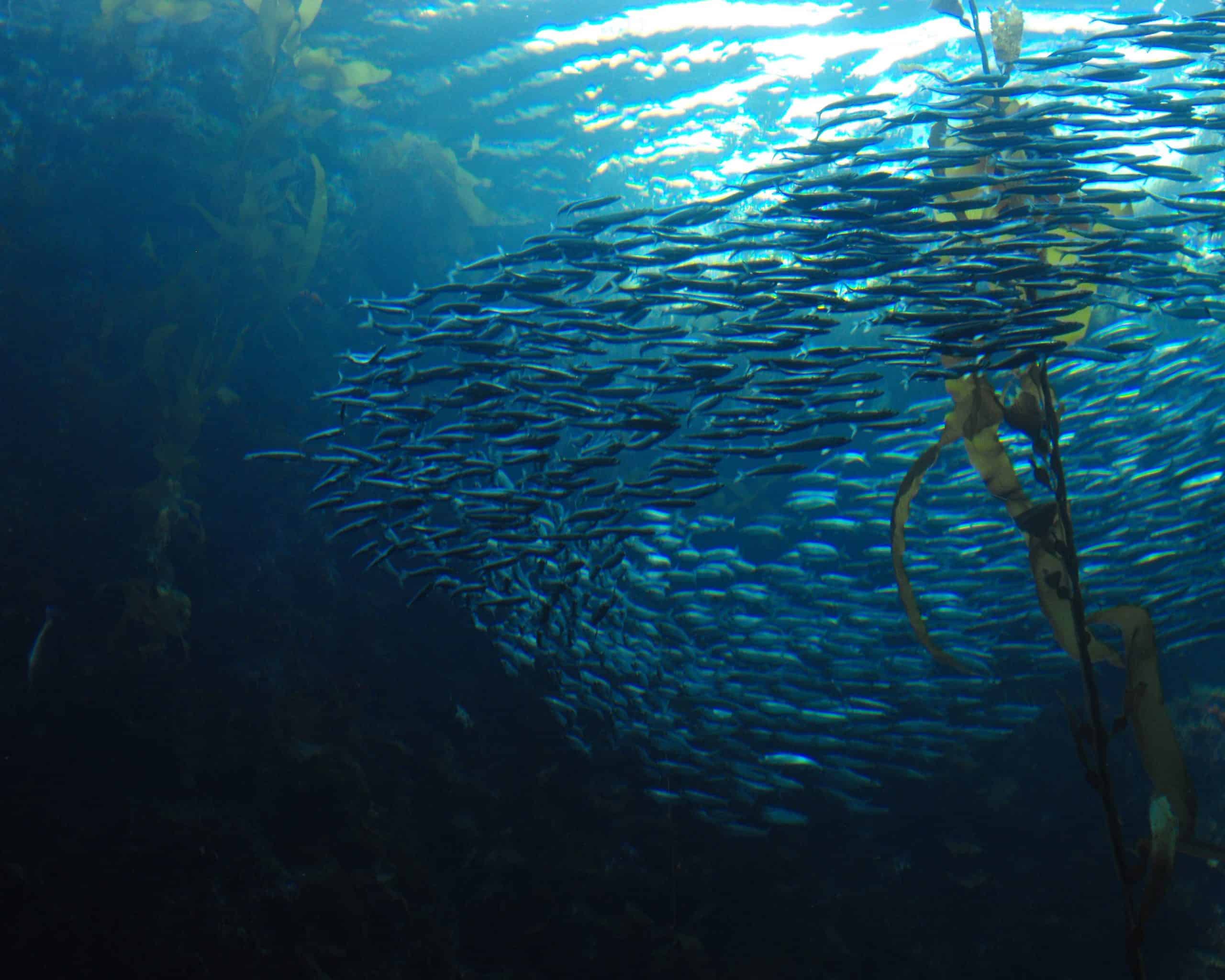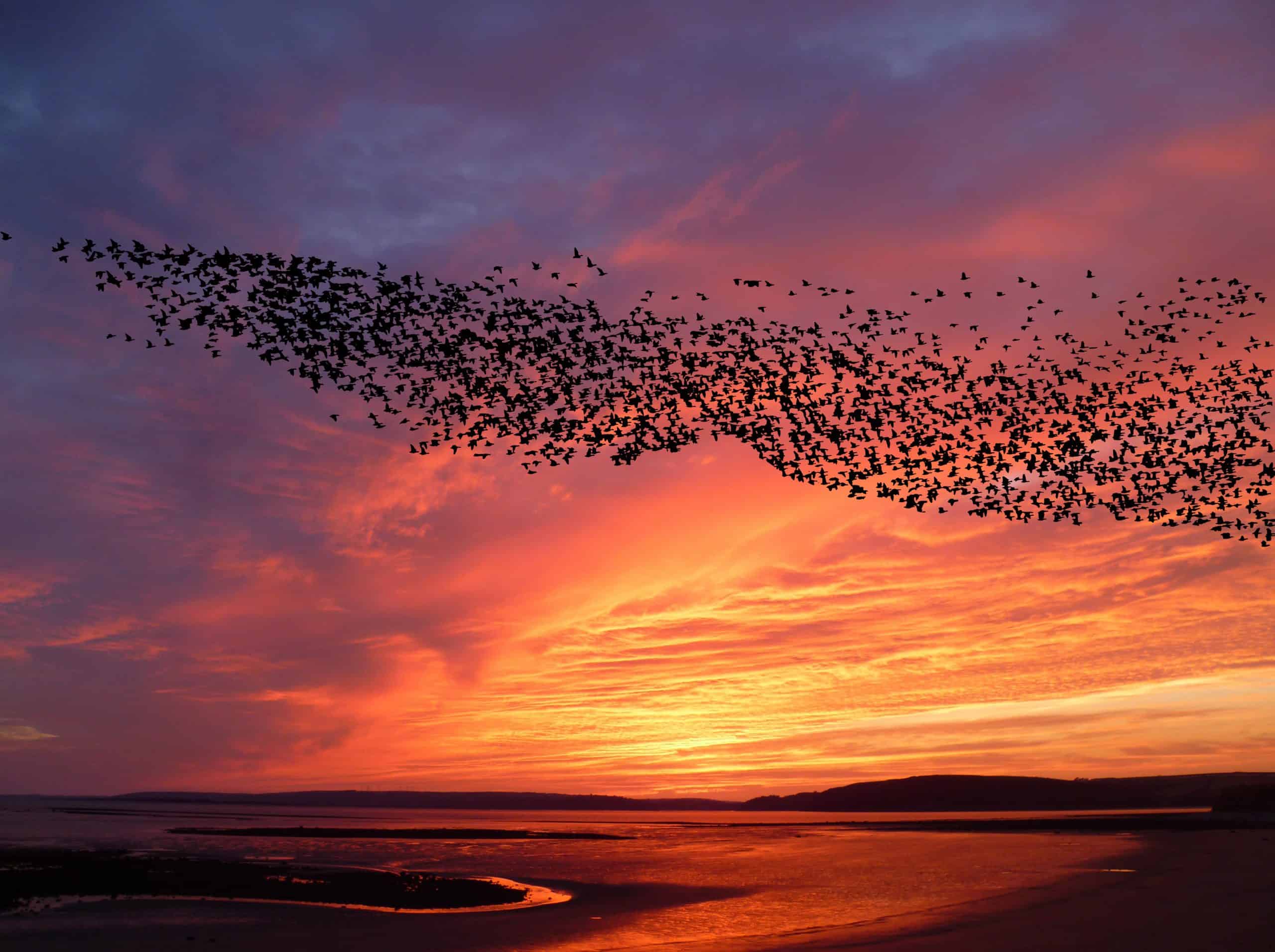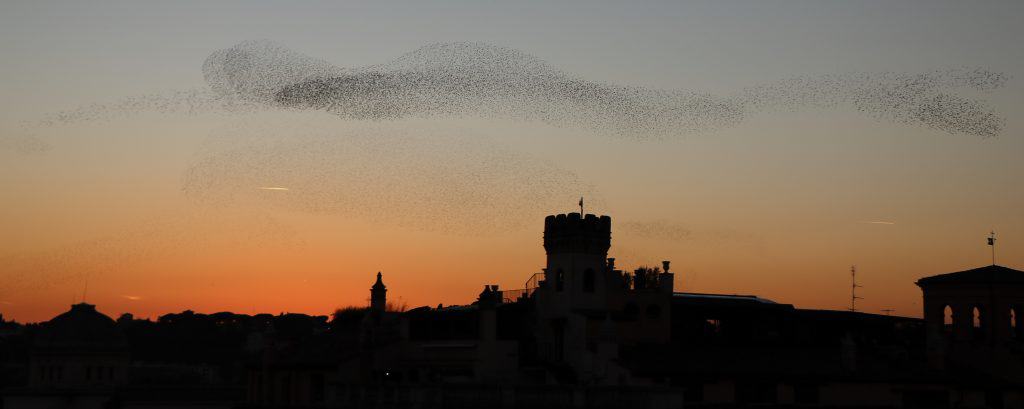It is a mesmerizing natural phenomenon—murmuration. This is when a huge flock of starlings all fly in a synchronized manner, creating fascinating patterns in the sky. Just watch some of the YouTube videos of murmuration and you’ll be amazed. Just why do starlings do this and how do they know which direction to turn when the whole flock is flying? The instinctive mechanism that triggers murmuration in starlings is very similar to schooling in fish and swarming in insects and actually has as much to do with physics as it does with genetics and biology.
Researchers have been able to determine that schooling in fish, swarming in insects, and murmuration in birds is not a learned behavior. It seems to be instinctive and even involuntary. In all likelihood this grouping and synchronicity is an evolutionary adaptation to protect the animals from predators. These is safety in numbers, after all.
Several species of fish school. This means they swim in tight formations and move in rhythm with each other. Schooling is different than shoaling, when fish swim in loose, unorganized groups. A school of fish, all moving in the same direction and swirling around, can confuse large prey animals. To be effective at schooling, the fish need to be totally in tune with each other and their surroundings. And the animals can do it flawlessly. The fish don’t bump into each other as they are swimming, nor do the starling crash into each other while in flight.

With murmuration and schooling, the animals position themselves at a fairly uniform distance from others. Researchers know that fish have a line of cells along their bodies called neuromasts. These neuromasts alert the fish to vibrations, pressure and temperature changes, and nearby water movement. Perhaps these sensory cells also inform the fish about the movement of the other fish around them and signal the body to move in that direction as well. If this is the case, it cannot be used to explain how the starlings know when and where the fly since they do not have neuromast cells. It could be, however, that they have a similar sensory system that researchers have yet to uncover.
One theory is that the starlings are tapped into an unseen network that connects them in such as way that they can detect the movement of birds on the other side of the flock. In a smaller flock of starlings, it might be tempting to attribute the synchronicity to vision—that the starlings can see every bird in the flock and is watching their movements. But this idea falls apart when studying larger flocks with thousands of individual starlings. It is simply not possible for a bird at one side of the flock to see what the birds at the other side are doing, let alone adjust its movements to coincide with theirs.
Scientists who have studied this unusual and wonderful phenomenon are now inclined to think of murmuration as something akin to how water freezes, liquids turn to gas, crystals form, and metal become magnetized. The elements in these processes remain in a constant state of ready, meaning they can be totally transformed at a moment’s notice with no prep time at all. The starlings, like the metal or the water molecules, are on edge in preparation for a sudden change so they react almost instantaneously to surrounding stimuli.

A 2012 research study on starling murmaration took at look at how directional changes by one bird impacts the surrounding birds. They concluded that the movement of one bird only impacts the seven birds closest to it. But those seven birds each react with their own movement, triggering the seven birds nearest to them. In this way, the directional changes spread through the flock at lightning speed. This process, according to researchers, is similar to the physics of magnetism. When a metal becomes magnetized, the electrons of one particle stimulate the ones near them to align and magnetize. Those particles then stimulate the ones adjacent to them until the process sweeps through the entire object.
If you have ever played the childhood ‘telephone’ game in which a sentence or verse is whispered to one person who, in turn, whispers it to another and down the line, you know how a message gets distorted as it passes through each individual. Even in physics and chemistry, we see that stimuli gets diluted, diffused, and distorted as it spreads. This does not happen in starling murmuration or fish schooling. The original message is spread through the entire group without alteration…and it does so very quickly. It can spread through a football field sized flock of starlings in less than one second as though the flock is one cohesive unit, capable of creative beautiful, undulating patterns in the sky.
Murmuration and schooling are examples of the collective behavior of some animal species. While researchers do not yet fully understand the mechanisms that influence these synchronized behaviors, they do understand why they do it. By acting as a single entity, the school or the swarm or the flock becomes larger and more intimidating than its individual members, proving that nature knows that there is safety in numbers.

Sources:
Adler, Jerry. “How Just One Bird Can Urge an Entire Flock to Change Directions.” Smithsonian.com, Smithsonian Institution, 1 Sept. 2014, www.smithsonianmag.com/science-nature/how-just-one-bird-can-urge-entire-flock-change-directions-180952426/.
LiveScience. “New Study Sheds Light On This Fishy Behavior.” HuffPost, HuffPost, 18 Sept. 2013, www.huffpost.com/entry/fish-schools-genes_n_3947303.
“What Is a Murmuration?” Wonderopolis, www.wonderopolis.org/wonder/what-is-a-murmuration.
